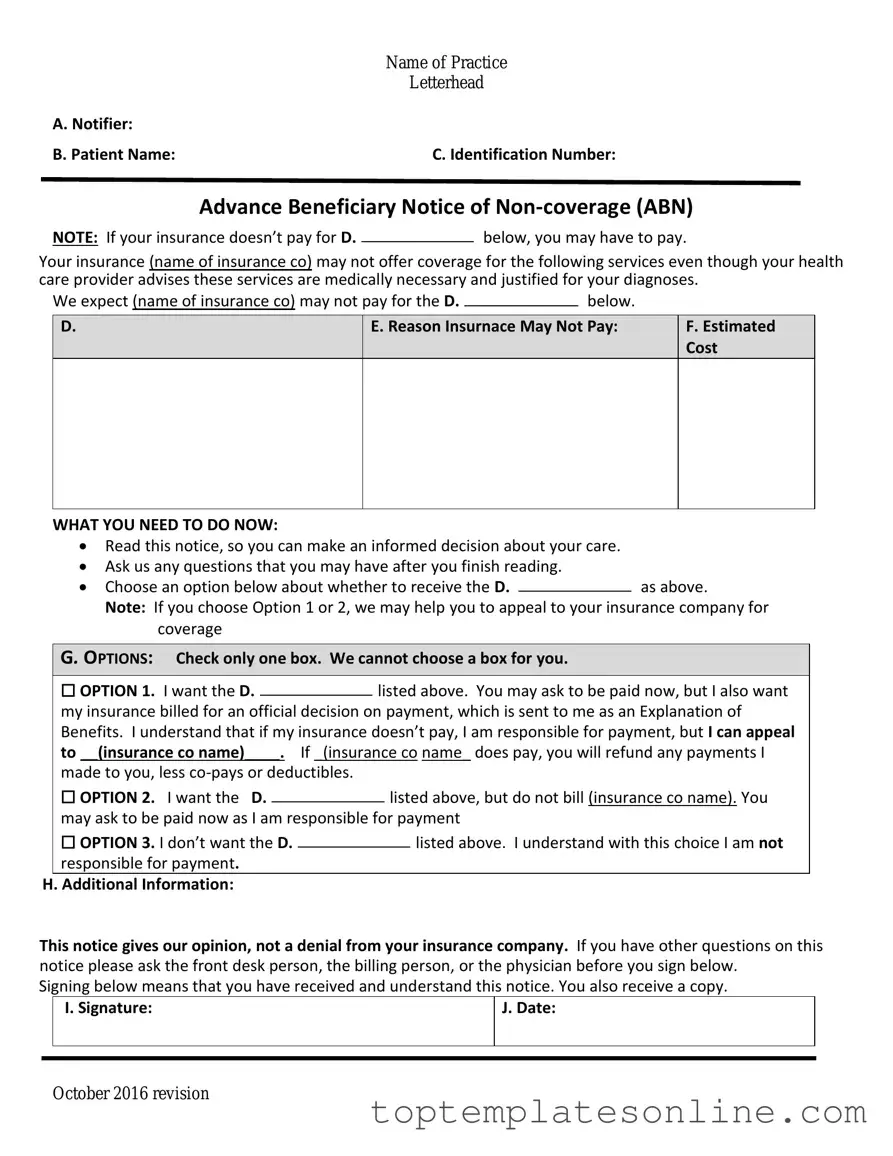Fillable Advance Beneficiary Notice of Non-coverage Form
The Advance Beneficiary Notice of Non-coverage (ABN) is a notification provided to Medicare beneficiaries when a healthcare provider believes that a service or item may not be covered by Medicare. This form allows patients to make informed decisions about their care by understanding potential out-of-pocket costs. By receiving the ABN, beneficiaries can choose whether to proceed with the service or item in question, knowing the financial implications involved.
Customize Advance Beneficiary Notice of Non-coverage Here
